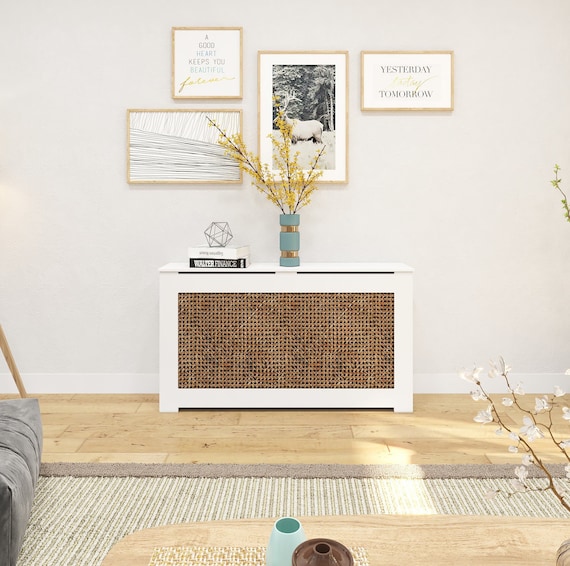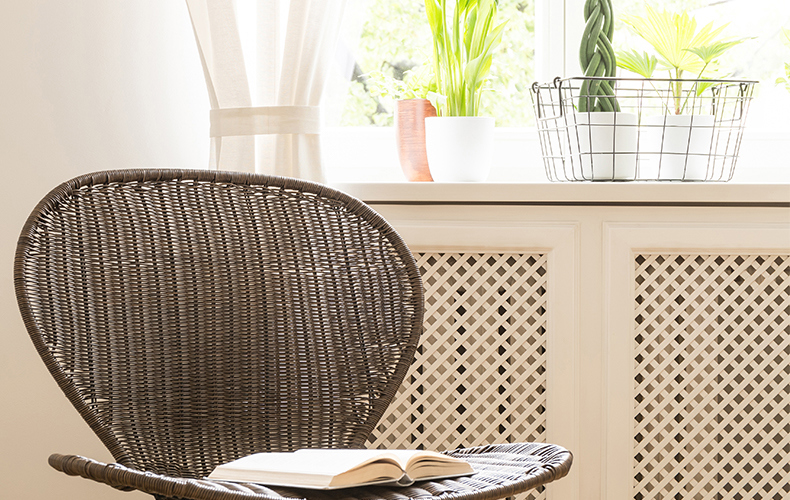6 Easy Facts About Radiator Covers Shown
Table of ContentsGetting My Radiator Covers To WorkThe Ultimate Guide To Radiator CoversRadiator Covers Things To Know Before You Get ThisSome Ideas on Radiator Covers You Should KnowThe 25-Second Trick For Radiator CoversThe Ultimate Guide To Radiator Covers
Over at the Old Residence Internet, Amy Hayden blogged about 5 Benefits to Using Radiator Covers. This has started a little bit of a dispute: Are rad covers valuable or do they waste power? Hayden composed, "Radiators are a good resource of heat, however they also use up valuable square video ...They might be called radiators, but they need to probably be called convectors, since the bulk of the warm that we obtain from a typical rad is relocated by convection. In convection, air warmed up in between the fins of the radiator increases to the ceiling and is bossed around the space in a circle.
More About Radiator Covers
Hayden wrote, "Radiator covers with the correct backing can disperse heat much more effectively than an exposed radiator. Rather than the warm going directly to the ceiling, the back allows it to be pressed right into the home." Lloyd Alter It holds true that radiators ought to have an appropriate reflective support; I use foil-faced bubble cover insulation; it shows a little of the radiated warmth that would have been soaked up by the wall back into the area and the radiator.
Radiator covers can be useful in older buildings made after the flu epidemic of 1918 - radiator covers. Then, as is the situation currently, wellness officials believed that fresh air was the means to prevent obtaining illness which individuals ought to copulate open home windows. Dan Holohan writes in "The Lost Art of Vapor Heating" that in New York City City, the Board of Wellness ordered that windows must remain open regularly, and the radiators were created to maintain buildings cozy on the chilliest day of the year with the windows open
All about Radiator Covers
Some radiators, like copper finned modern-day rads, included indispensable covers, commonly with dampers to readjust the convection; they, like steam rads, require covers because they are too hot to touch. But also for a conventional cast iron rad that one discovers in old homes, connected to a hydronic system, a cover isn't required for security.
In a recent blog post, Holohan kept in mind that some radiators can get precariously warm. He described a legal action where a child rolled off the bed and obtained stuck in between the radiator and the bed and experienced severe burns. He wrapped up, "If I was a proprietor, I would cover all the radiators in the houses that had kids living there.
As a normal home heating appliance, radiators are not there merely to look pretty but to maintain your home warm utilizing all-natural convection. With more focus on indoor style, these home appliances can prove unattractive and sidetrack from the remainder of the very carefully outlined visual appeals of a room. To align a radiator to the layout of the remainder of your room, you can cover one up though this does come with effects for the home heating.
A radiator cover is essentially a way of hiding a radiator to obscure it from view. They commonly are available in two materials, timber and galvanized metal. Wood is thought about the most typical material for a radiator cover check out here as it merely looks better. This is in spite of the truth that timber is not an excellent conductor of heat yet it is excellent for childproofing so is perfect for a young household.
The 25-Second Trick For Radiator Covers

Not only can they childproof the home appliance and include a visually pleasing style, but a radiator cover can likewise add additional storage space, especially in the bathroom. With a flat surface, you need to be able to keep soaps and scents to keep them within easy reach. By repurposing the room, the radiator cover can become a makeshift mantelpiece.
That is certainly the case with radiator covers and they can restrict the performance of your central furnace. By interrupting the flow of warm air and the all-natural convection, you can endure warm loss and grab the thermostat when you actually ought to not need to. Effectively, a radiator cover can cost you cash by excessively investing in home heating you are not enjoying.
How Radiator Covers can Save You Time, Stress, and Money.
These consist of bleeding the radiators, using reflective backing, and preserving a void for the radiator. The majority of homes must be bleeding their radiators at the very least yearly. The job helps to remove any my company trapped air which could be avoiding the hot water from navigating the home appliance. It also only takes a minute or two to hemorrhage a radiator and is a foolproof method to improve its effectiveness.
Radiators function by all-natural convection, as cool air sinks to the base of the wall, it enters contact with the radiator after that warms up and climbs as the air ends up being less thick. The warm air successfully heats up a space. If you were to put things following to the radiator, such as a couch, or border one with a radiator cover, then this would certainly conflict with the all-natural convection and you would not be able to really feel the full advantages of the heating.
Radiator covers may be a good option if you have young youngsters running around and need a way of stopping them from melting themselves on the warm surface area. While a cover should look good to conceal a radiator, any kind of material that obstructs a home heating appliance will certainly decrease its performance. To offer a full layout, the radiator cover must discuss the shutoffs, as well as the heating system and pipes.
See This Report on Radiator Covers

Which my concern: exactly how do I deal with finding out if my radiators should have covers? I have a good friend that believes the concern is straightforward: a cover catches the warm, so eliminating the cover will certainly enable the warm to far better get in the area and will make the radiator more reliable.
Which my question: exactly how do I go around finding out if my radiators should have covers? I have a friend who thinks the issue is simple: a cover traps the heat, so getting rid of the cover will enable the warmth to much better go into the space and will certainly make the radiator extra effective.
And thats my concern: just how do I you could check here go around determining if my radiators should have covers? I have a good friend who thinks the issue is easy: a cover traps the warm, so getting rid of the cover will allow the heat to much better enter the room and will certainly make the radiator more reliable.